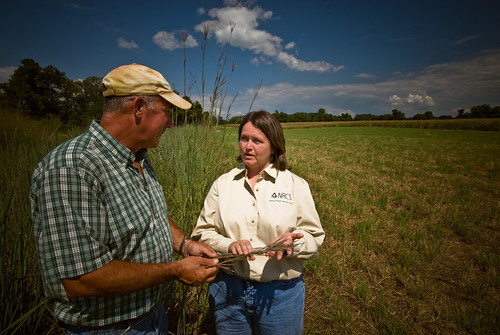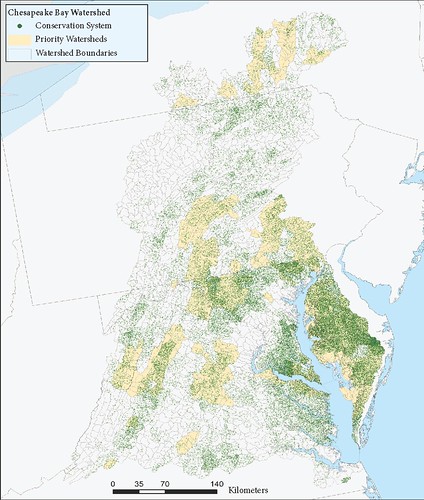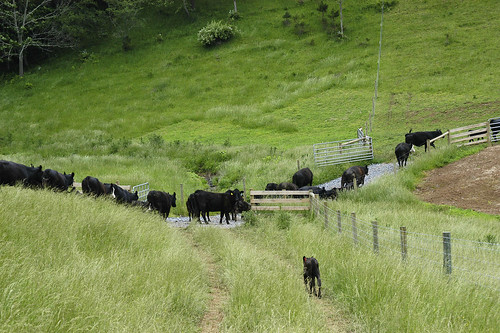
To improve the health of the Chesapeake Bay watershed, farmers and forest landowners are using conservation systems that reduce nutrient and sediment runoff.
A vibrant and healthy agriculture sector is a critical component of restoring and improving the health of the Chesapeake Bay, and I’m proud of the steps that our Bay-area agricultural producers are taking to protect this national treasure. Agricultural producers have implemented nearly $1 billion worth of conservation practices on 3.6 million acres – an area three times the size of Delaware – since 2009 with the help of the U.S. Department of Agriculture (USDA).
From coastal communities in Virginia and Maryland to the hills of West Virginia and Pennsylvania, farmers and forest landowners are voluntarily making conservation improvements to their land that reduce erosion, manage nutrients and protect stream corridors – all contributing to cleaner water downstream. We celebrated the accomplishments of producers today at Y Worry Farm in Anne Arundel County, Maryland, bringing together producers, agricultural groups, non-government organizations and others to celebrate these investments in cleaner water.
At the farm, we met Mark Scible and his family who use no-till, precision farming and other conservation practices that send cleaner water to the Patuxent River, one of the many tributaries of the nation’s largest estuary.
Historically, the Bay has suffered from high amounts of nitrogen, phosphorus and sediment pollution, impacting wildlife, fishing, recreation and water quality, and farmers like Scible are working with USDA’s Natural Resources Conservation Service (NRCS) to improve its quality.
NRCS staff work side-by-side with producers to plan and implement conservation systems customized to each farm and working forest. From planting cover crops to establishing buffers along waterways, these conservation practices contribute to cleaner water downstream and many other benefits.
From this work, based on 2006-2011 data, average edge-of-field sediment loss has decreased by 15.1 million tons per year, which is enough soil to fill 150,000 train cars, stretching 1,704 miles or a distance further than from Washington D.C. to Albuquerque, New Mexico.
And producers have installed nearly 3,500 miles of fences and riparian buffers — enough to span from Annapolis, Maryland, to San Francisco, California, and then north to Seattle, Washington.
Much of this work is targeted in priority watersheds, where water quality is poorest and conservation can make the biggest difference. NRCS has a goal of putting conservation systems on 4 million acres in these watersheds by 2025, and since 2010, farmers have already put conservation on 1.6 million acres – 41 percent of the goal.
That’s a lot of conservation in just seven-plus years. But our work isn’t done. USDA has continued to provide assistance to producers to enlarge the conservation footprint. USDA has also enlisted the help of many conservation partners and provided tools like the Regional Conservation Partnership Program and Conservation Innovation Grants program to bring new ideas and resources to the table.

This map depicts more than 82,000 locations where farmers and forest landowners have adopted conservation systems to improve water quality since 2009.
This investment on Bay-area farms is part of a larger effort by the Obama Administration to improve the health of this vital watershed. In 2009, President Obama charged government agencies to work focus resources and to find innovative solutions to improve the health of the Bay, and USDA took that call to action seriously.
We’re pleased to see the signs of a healthier Bay around us, from grasses on the sea floor to more abundant fish and wildlife, and to ultimately cleaner water.
Independent reports show positive trends. Underwater grasses, which provide critical food and shelter to wildlife, are thriving. The blue crab, an indicator of the Bay’s health, has seen population spikes. And stations that measure water quality are showing improvements in many creeks and rivers that flow to the Bay.
We know more needs to be done. And while there is no short-term solution for the complex and multi-decadal water quality issues in the Chesapeake Bay watershed, all sectors working together can deliver valuable solutions. Science shows that voluntary agricultural conservation is measurably reducing the runoff of nutrients and sediment into waterways. But solutions will take time.
NRCS and its partners have worked with farmers in the Bay region for more than 80 years. Agriculture is doing its part. Public-private partnerships and close collaboration with State governments to support voluntary agriculture conservation efforts is key to success by cooperating on achieving clean water goals.
To conclude, NRCS is committed to helping agriculture continue its contribution to improving water quality in the watershed while remaining a strong and vibrant economic engine for the region.
To learn more about USDA’s investments in the Bay, download our new report, Agricultural Lands – Key to a Healthy Bay, or visit nrcs.usda.gov/chesapeake.

Stream crossings help keep streambanks intact and waterways free of nutrients.
No comments:
Post a Comment
Note: Only a member of this blog may post a comment.